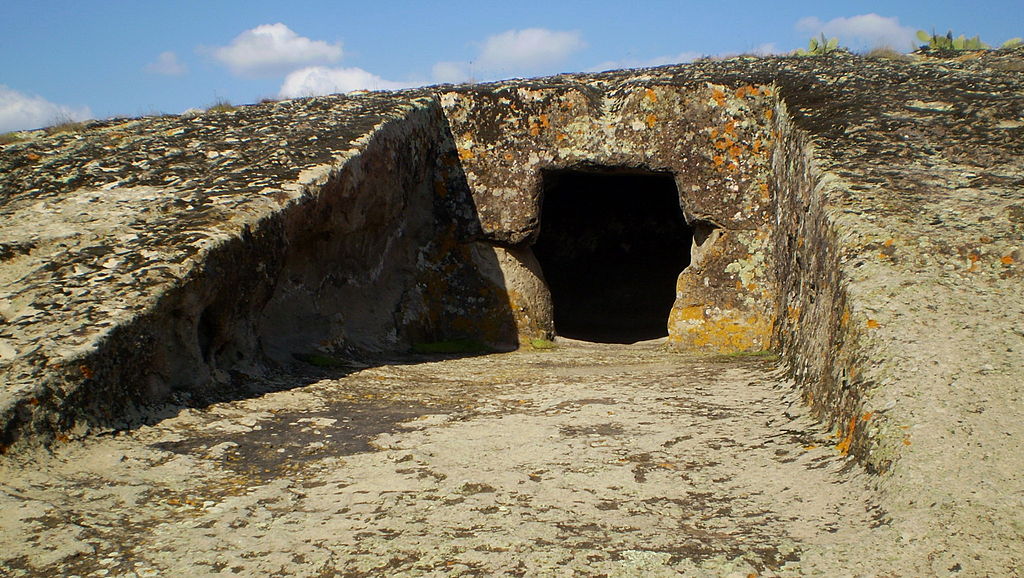

The Sardinian hypogeic tombs and the rite of passage to the afterlife They represented the symbolic, metaphysical space in which the passage to the afterlife was realised. The rite of burial accompanied this ideal transit, and the architecture of the domus de janas was an intrinsic and fundamental component of it. The ancient Sardinians believed, in fact, that life continued beyond death, that man was reborn in a new dimension, no longer from a mother’s uterus, but from the womb of the earth itself.

Andrea Priu di Bonorva : 1 – atrium 2 – antechamber 3 – main chamber. The plan of the Tomb of the Chief, necropolis of S.

In this case the presence of a dromos corridor served to welcome the ritual procession that carried the deceased into the womb of Mother Earth. The monumental entrances, provided with a larger antechamber, suggest instead collective ceremonies for the entire community, apotropaic rites of passage endowed with the necessary efficacy to ward off the return of the undead. In the case of the pit tombs, a desire for privacy prevails, perhaps even a concern to confine the deceased to the tomb for fear that he could, frighteningly, return from the afterlife. The entrance, on a vertical rock face, to the domus de janas of Sant’Andrea Priu in BonorvaĪ difference in ritual purposes is evident between these two types of entrance. The domus de janas were often introduced by monumental entrances or dromos, but the entrance could also be more hidden, pit type, below the ground level. This basic form could be enlarged with the addition of further cells. The domus de janas are carved into the rock and consist of at least two rooms, comprising an antechamber, a small entrance room used for transporting the deceased, and a burial chamber. The sacred architecture of the domus de janas However, the use of hypogeic tombs could date back to even earlier times, perhaps to the Middle Neolithic, in correspondence with the San Ciriaco culture, a late aspect of the Bonu Ighinu facies. In Sardinia, there are more than three and a half thousand domus de janas belonging, in most cases, to the anthropological context known as that of Ozieri, which constituted a cultural avant-garde of its time. The name domus de janas, evocative in its references to fairy houses, is a result of popular culture, which had by then forgotten the original use of those rooms carved out of stone. Domus de janas, pre-Nuragic hypogeic tombs at the Necropolis of Fundu ‘e Monti in Lotzorai The Sardinian hypogeic tombs: the domus de janas So, the Sardinian hypogeic tombs, collective burials known as domus de janas, developed simultaneously with the megalithic dolmen tombs. Rites of passage characterized the hierophanies of that time, albeit in changing forms, and the funerary architecture. The slow affirmation of pre-Nuragic cultures is known to us through the fruits of this process, involving both the material aspects of everyday life and the dimension of the transcendent. The ancient Sardinians trace thresholds among distant worlds, seek the essence of the reality in the imaginary, create rituals with archaic powers.
#Domus de janas full
Stone is thus moulded as an image of one’s own being, anthropomorphic features become increasingly explicit in art, and architecture is the full expression of the sacredness. In Sardinia, a primitive spiritual feeling that aims at self-knowledge and understanding of the world is expressed through stone since the Palaeolithic age.


 0 kommentar(er)
0 kommentar(er)
